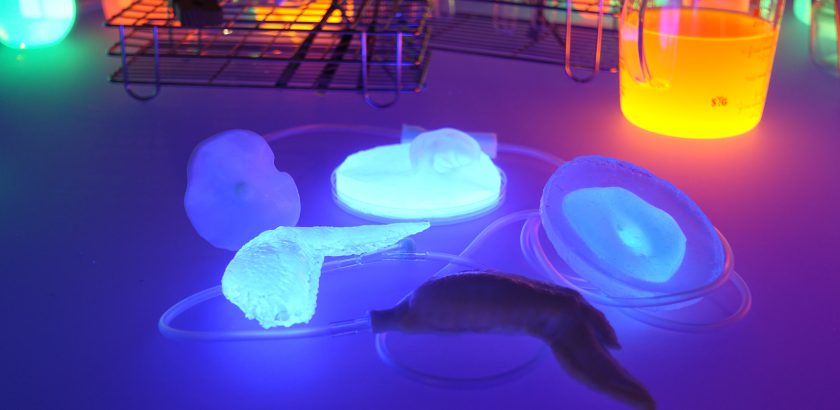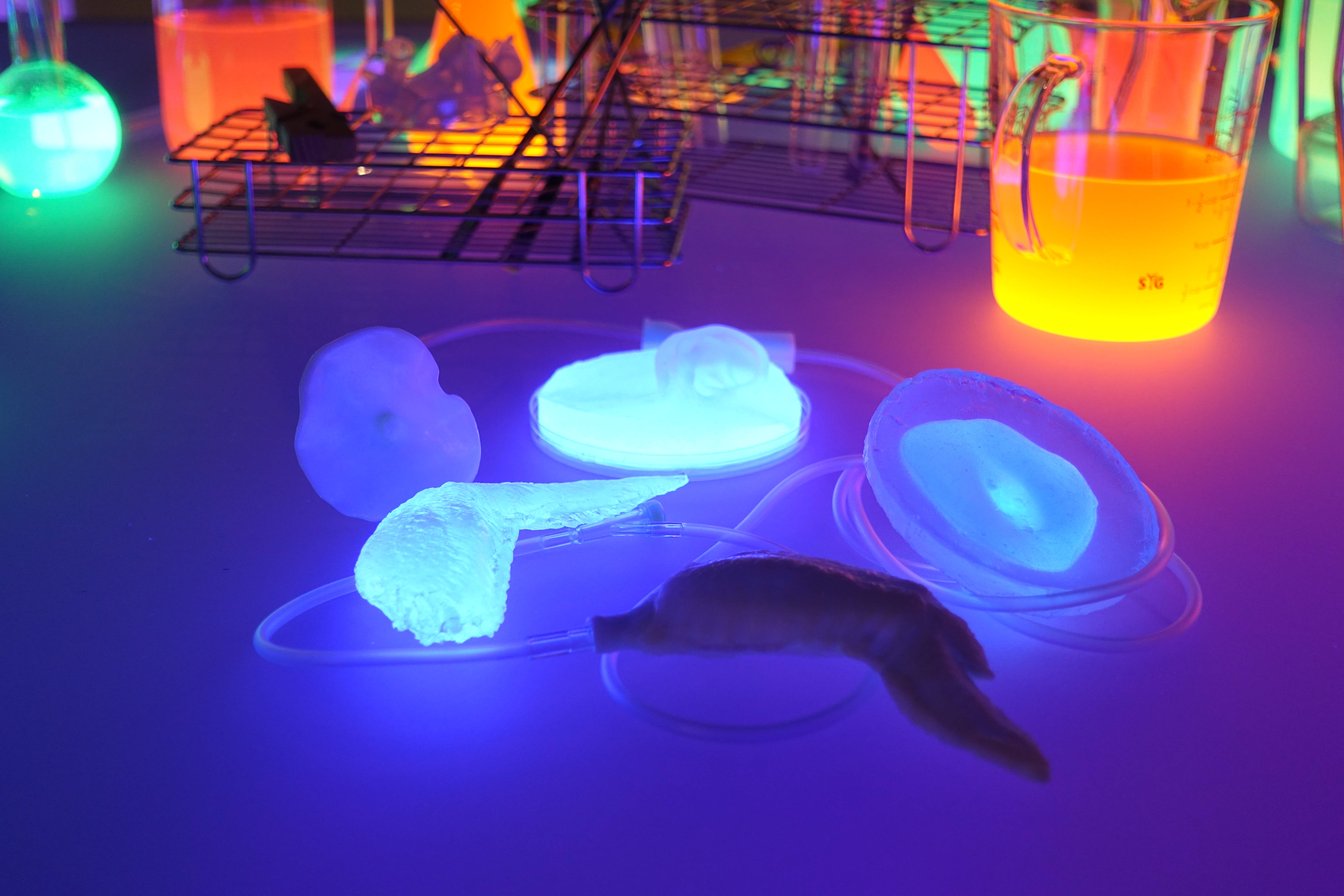吳梓寧,複合媒材物件裝置,雞翅、人體翻模雕塑、醫療輸液管、環氧樹脂,2016。
Tzu-Ning Wu, Mixed Media Installation, Chicken Wings & Body Sculpture Molding, Medical Infusion Tube, Epoxy, 2016.
結合「奈米胎盤」與「人造子宮」的外接式「GFP 自耕套件」組合,是模擬從人體肚臍植入「奈米胎盤」,透過輸液管銜接所欲培養的肉品模型「人造子宮」,擬造透過人體農場自耕所需食物的後人類糧食生產模型。「胎盤」同時作為母體與胎兒之間的營養供給與排泄物的代謝樞紐,母體在懷孕期間與胎兒相連且互通有無,兩
者的免疫系統相異,但並不會視胎兒為外來物而誘發免疫攻擊,胎盤扮演了關鍵的角色。胎盤主要的功能包括從母體中傳遞給胎兒成長所需的養份與空氣,將胎兒代謝廢物傳回母體排泄,屏蔽部分有害物質,例如病菌與毒素的傳送,隔絕雙方的免疫系統的互相干擾。「子宮」可以容許異質的個體生命在體內成長存活,GFP 自耕套件利用子宮的物理功能,包裹所欲耕作或養殖之食物,使之生長環境能與外界隔絕,可依照喜好製作不同食物造形的子宮模具。
The GFP Self-cultivating Kit uses two parts to simulate a posthuman farming model. The first part simulates a customised “nanometric-placenta” implanted in abdomen, and the second part is an artificial womb connected by plastic tube. “Placenta” as the hub of both nutrition and waste lies between the mother and the foetus. The metabolic and immune systems of both sides are connected. Because of the placenta, the foetus would not be considered as an “outsider” and attacked by the mother’s immune system. The placenta provides air and nutrition to the foetus and ships out the waste from the baby’s side, it also blocks some hazardous substances like bacteria and toxin, and it keeps both sides’ immune systems from attacking each other. While womb could keep another life in one’s body, the GFP Self-
Cultivating Instructions uses this physical function of the womb to enwrap the food against the outside environment. The user could make different models for the artificial womb, based on the appearance of the food he/she likes.


